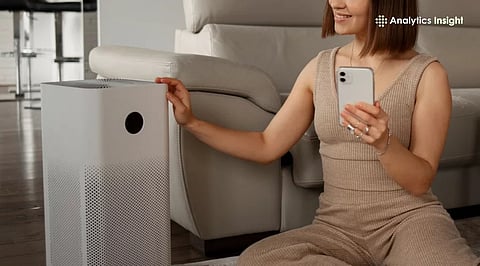

Filterless air purifiers use innovative technology (like thermodynamic or ionization systems) to clean indoor air without traditional filters, reducing maintenance and running costs.
In 2025, these devices are gaining traction in Indian homes and small offices as awareness of air quality rises and users seek low-maintenance solutions.
Key buying considerations include room coverage, noise levels, energy consumption, and whether the technology effectively captures fine particulates—not just large dust particles.
Indoor air pollution continues to be a major health concern in urban Indian households, particularly during periods of high smog or when people engage in household activities that generate fine particles. Although air purifiers do a decent job, traditional models mainly rely on replacing filters, which requires constant maintenance and recurring costs.
However, filterless air purifiers have now become top choices in many households. They are designed to eliminate or minimize maintenance while still effectively purifying the air. The filtered units typically employ patented technologies such as ceramic heating, ionisation, and electrostatic capture, among others. These models also remain quiet and consume very little power. Let’s take a look at the top filterless models for home and office in India.
iLife air purifier is a compact and affordable model that has been marketed as ‘no filter needed,’ and it is designed for small rooms and personal spaces.
The manufacturer claims that this purifier can effectively treat smoke, dust mites, and other common pollutants with minimal maintenance. Its size and price make it a good option for those looking for easy maintenance and moderate coverage.
iLife’s Air Purifier, which is technically similar to the previous one, is branded as ‘no filter.’ The overnight convenience of no scheduled filter replacements is its main advantage, providing user-friendly access to filterless technology for less populated rooms. Always check its claims about the actual particles being removed.
This portable, filterless purifier is not marketed as a whole-room device, but rather as a personal one, demonstrating a complete rethinking of the concept: the filterless idea, along with portability, is being designed for micro-environments.
Ionization or other non-filter methods are employed, and there is a runtime specification (60 hours), so one can use it as a protection during daily activities. WeFilter Air Purifier is more suitable for use during a trip or a car ride than for covering the entire house.
Also Read: Best Air Purifiers to Buy Under 10000
Although Eureka Forbes’ Air Purifier is not considered completely filterless (it still employs a HEPA filter), it has been included in the comparison to highlight the differences between modern maintenance-reduced designs and full filterless ones.
The product offers all the benefits of an air purifier, with a very long filter life and excellent coverage, making it an ideal and practical choice for users who are uncertain about adopting new technologies. There is also some maintenance reduction compared to cheaper models.
Also Read: Best HEPA Air Purifiers for Allergies
Filterless air purifiers are a significant step up for customers who want clean air without the constant cost and trouble of replacing filters. iLife and WeFilter are excellent examples of how the category is evolving from small, personal devices to larger, home-oriented ones.
Nevertheless, the full filterless technology is still a niche one, and it likely comes with the limitation of reduced coverage or particulate removal compared to traditional HEPA systems. Assess the room's dimensions, the quality of air required, and the legitimacy of the newer tech before making a purchase.
If you're looking for the lowest-maintenance option, a filterless model is a great choice, but it must also meet real-world performance expectations.
1. What does ‘filterless’ mean in an air purifier?
Consequently, the air cleaner of the module lacks a standard HEPA or carbon filter, which investors are obligated to replace. Rather, the air goes through the process of purification by means of several methods (e.g., ceramic heating, ionization, and electrostatic capture).
2. Are filterless air purifiers as effective as traditional ones?
Technology and room size determine effectiveness. Filterless models require less maintenance; however, some reviews report that they do not consistently achieve fine-particle capture comparable to that of a name-brand HEPA filtration system.
3. What are the maintenance benefits?
Filterless units do not require any replacement filters, which results in reducing the cost and also effort. They usually only have to be cleaned occasionally on the outside.
4. How do I choose one for my room?
Take a look at the room-coverage spec and confirm that the technology is compatible with the types of pollutants (smoke, dust, allergens). Also, consider noise levels and energy consumption. Even filterless models should be able to handle the room's air exchange.
5. Are these widely available in India?
Of course, filterless models are not as common as traditional models. There may be import costs or limited local support, so it is good to check warranty, local service, and parts availability.
